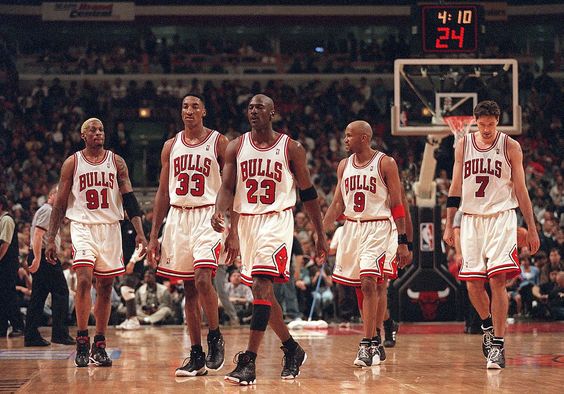What is Cherry Picking in Basketball
Cherry picking in basketball refers to a tactic where a player positions themselves strategically close to the opponent’s basket, essentially waiting for a pass to capitalize on an easy scoring opportunity. The player deliberately stays behind the opposing team’s defense, hoping to receive a long pass that can result in an uncontested layup or dunk. Read about What is a Bank Shot in Basketball
Tactics Behind Cherry Picking
The art of cherry-picking involves split-second decision-making. Players must assess the game’s dynamics, judge the timing of the pass, and position themselves skillfully. It’s a high-risk, high-reward strategy that demands an acute sense of timing and awareness.
Also read the Article: What is a Triple Threat in Basketball
The Controversy Surrounding Cherry Picking
Cherry-picking isn’t without controversy. Critics argue that it goes against the spirit of fair play, as it can lead to unearned points. Detractors view it as a lazy approach, as players might neglect their defensive duties.
However, proponents suggest that cherry-picking can add excitement and unpredictability to the game.Is cherry-picking ethical? The answer isn’t black and white. While some consider it a legitimate strategy within the rules, others find it unsportsmanlike. The debate hinges on the balance between exploiting a tactical advantage and upholding the principles of teamwork and competition.
Impact on Gameplay What is cherry-picking in basketball
Cherry-picking has a profound impact on the game’s flow. It can force opposing teams to adjust their defensive strategies, leading to gaps in their own offense. Additionally, successful cherry-picking can be demoralizing for the opposing side, giving the cherry-picker’s team a psychological edge.
Defensive Measures Against Cherry Picking
Teams have devised ways to counter cherry-picking. Strategies include assigning a player to closely mark the cherry picker, disrupting passing lanes, and maintaining swift transitions between offense and defense. Cherry picking isn’t a new concept. Its origins can be traced back to the early days of basketball. However, it has evolved alongside the sport’s rules and tactics, adapting to the changing landscape of the game.
Famous Cherry Picking Moments
Over the years, cherry-picking has led to memorable moments in basketball history. From last-minute game-winners to jaw-dropping dunks, these instances highlight the strategy’s potential to shift the course of a match. In today’s fast-paced basketball, cherry picking still finds its place. With players becoming more agile and versatile, coaches strategically employ cherry-picking to catch opponents off guard.
At first glance, the cherry picker seems to be taking a more individualistic approach, positioning themselves strategically for an easy score. However, their role goes beyond just waiting for a pass. Effective cherry-picking requires a deep understanding of the team’s offensive strategy, the defense’s weaknesses, and the timing of transitions from defense to offense. Cherry-picking often goes hand in hand with fast breaks—a rapid transition from defense to offense. This combination can lead to swift and unexpected point-scoring opportunities.
Improving Team Communication
Effective cherry-picking requires seamless communication among teammates. Players need to anticipate each other’s moves and act cohesively to execute the strategy successfully.
Team Coordination
For cherry-picking to succeed, the cherry-picker must be in sync with the passer. This level of coordination isn’t achieved through coincidence but through strategic planning and practice. Teammates need to anticipate each other’s moves, recognize when the opportunity for cherry-picking arises, and deliver accurate passes. This requires a high level of trust and chemistry among the players.
Adapting to the Game
Cherry-picking is a dynamic strategy that adapts to the game’s ever-changing flow. Players need to read the game in real-time and make split-second decisions. This adaptability isn’t just limited to the cherry picker; the entire team needs to adjust their positions and movements to optimize the potential of cherry picking.
Certainly, let’s continue exploring the topic of “Cherry Picking in Basketball” in a different direction. One of the most intriguing aspects of cherry-picking in basketball is how it highlights the delicate balance between individual skill and team dynamics. While cherry-picking might appear to be a solo endeavor focused on scoring points, it actually hinges on the collaborative efforts of the entire team.
The Cherry Picker’s Role
At first glance, the cherry picker seems to be taking a more individualistic approach, positioning themselves strategically for an easy score. However, their role goes beyond just waiting for a pass. Effective cherry-picking requires a deep understanding of the team’s offensive strategy, the defense’s weaknesses, and the timing of transitions from defense to offense.
Team Coordination
For what is cherry-picking in basketball to succeed, the cherry picker must be in sync with the passer. This level of coordination isn’t achieved through coincidence but through strategic planning and practice. Teammates need to anticipate each other’s moves, recognize when the opportunity for cherry picking arises, and deliver accurate passes. This requires a high level of trust and chemistry among the players.
Adapting to the Game
Cherry picking is a dynamic strategy that adapts to the game’s ever-changing flow. Players need to read the game in real-time and make split-second decisions. This adaptability isn’t just limited to the cherry picker; the entire team needs to adjust their positions and movements to optimize the potential of cherry picking.
The Psychological Factor
Cherry picking doesn’t just impact the physical dynamics of the game; it also plays a significant role in the psychological aspect of basketball.
Mind Games
The presence of a cherry picker on the court can mess with the opposing team’s psychology. The defenders become torn between their defensive duties and the looming threat of an easy score from the cherry picker. This distraction can lead to lapses in defensive focus, providing opportunities for the offensive team to exploit.
Confidence and Momentum
Successful cherry picking can inject a surge of confidence and momentum into the cherry picker’s team. Scoring points through this strategy can boost team morale and create a sense of invincibility. On the other hand, the opposing team might experience frustration and demoralization, affecting their overall performance.
Balancing Act: Risk and Reward
Cherry picking embodies the classic risk-reward scenario. It’s a strategy that can swing the game’s outcome dramatically, but it also comes with inherent risks.
The High Reward
When cherry-picking works, it can result in those breathtaking moments where the cherry-picker scores an easy basket, swinging the score in favor of their team. These moments not only energize the players but also captivate the audience, becoming the highlights of the game.
Analytical Approach
Modern basketball is increasingly data-driven, and this applies to cherry-picking as well. Teams analyze their opponents’ defensive patterns, transition speeds, and passing accuracy to identify the most opportune moments for cherry-picking. Cherry-picking scenarios are now a common part of team practices.
Coaches set up simulations that mimic real-game situations, allowing players to refine their positioning, timing, and decision-making. This approach ensures that what is cherry-picking in basketball is executed flawlessly when the actual game demands it.
Coaches’ Perspective on Cherry Picking
From the coach’s viewpoint, cherry-picking presents both challenges and advantages. Coaches must decide when to encourage this tactic and when to prioritize traditional defensive strategies.
Conclusion
In the world of basketball, cherry-picking remains a captivating and controversial strategy. Its impact on the game’s dynamics and the ongoing debate about its ethics contribute to its enduring relevance. As the sport continues to evolve, so too will the role of cherry-picking on the court.
FAQs
Q. Is cherry-picking considered cheating?
A. Cherry picking is not cheating; however, opinions differ on its sportsmanship.
Q. Can cherry-picking backfire?
A. Yes, if the timing is off or the opposing team counters effectively, cherry-picking can lead to turnovers.
Q. Are there specific rules against cherry-picking?
A. No, cherry-picking is not explicitly prohibited, but referees monitor for unsportsmanlike behavior.
Q. What skills are crucial for successful cherry-picking?
A. Timing, positioning, and quick decision-making are key for successful cherry-picking.
Q. How has modern basketball influenced cherry-picking tactics?
A. Modern basketball’s emphasis on speed and versatility has made cherry-picking a strategic tool for exploiting gaps in defense.
Alina is a passionate basketball player with a love for the game that knows no bounds. With years of experience on the court, she brings unmatched skill and dedication to her team. Alina’s commitment to excellence both on and off the court sets her apart as a leader and motivator. Whether she’s driving to the basket or encouraging her teammates, Alina’s enthusiasm and sportsmanship shine through. As a valuable member of the basketball team, Alina’s presence elevates the spirit and performance of the entire squad.







